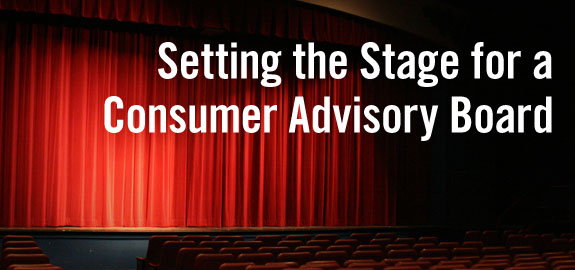Involving consumers can positively impact the quality and effectiveness of services provided in organizations. This article offers suggestions to help organizations create and foster a consumer-oriented and inclusive culture, starting with creating a Consumer Advisory Board.

Creating and maintaining a Consumer Advisory Board can be a demanding but incredibly rewarding experience. The main purpose of creating a Consumer Advisory Board (CAB) is to provide your organization the opportunity to learn from consumers’ experiences, honor their expertise, and acknowledge that they know how services should be delivered. Input from consumers is essential to ensure that programs meet the needs of those they are serving. Organizations who have already established a CAB believe that families can offer a unique perspective on their experience with different programs and services.
Consumers can work with your organization to discuss and find ways to improve your service system. Involvement with organizational decisions gives consumers an opportunity to participate in meaningful ways. CABs can help you create a consumer-oriented, inclusive organization. In addition, efforts to integrate consumer input help to increase client engagement and retention. CAB members can also act as positive role models for your clients. Consumers bring expertise to the table, their ideas and opinions are based in their knowledge of the system impact.
Setting the Stage for a CAB
- Create an environment that promotes consumer involvement
- Conduct an environmental assessment
- Foster staff buy-in
- Articulate the organization’s vision for the Consumer Advisory Board
Organizational Culture Shift
To begin the organizational shift, it is important that the organization create an environment and culture that welcomes consumers’ ideas and sustains their involvement. Consumers need to feel welcomed, respected, supported, and heard by the organization’s staff. The attitude and beliefs of professionals and consumers can affect the quantity and quality of consumers’ participation. It is common for both professionals and consumers to struggle over how they define the purpose of a CAB, which can create conflict or barriers. Consumers are also challenged by their own beliefs - they may have different opinion than your staff, and they may worry that they are not given meaningful opportunities for involvement.
Recruiting Consumers for Participation
Effective recruitment of consumers to participate on CABs requires overcoming a number of barriers that prevent or discourage membership. Some of these barriers include lack of knowledge about how to become involved, the belief that consumers are not taken seriously, childcare, transportation, or language barriers. It takes a lot of time and effort to recruit members for advisory boards.
As an organization, you must decide what types of skills and qualities you will require of members on your board. You also must convince qualified consumers to commit their time to participate on the board. This is an opportunity to reach out to your organizational network. Board members, staff, program participants, and partners can provide you with names of consumers who may be interested in getting involved.
Contact potential CAB members personally, starting with phone calls or in-person meetings, and then follow up with letters. If possible, interview prospective members face-to-face. For a CAB to be effective, it must have a clear purpose. CAB members need to understand the mission of your organization and the CAB, receive training, and remain motivated to meet the Board goals. Make sure that CAB members understand their responsibilities.
Remember, involving consumers is a win-win situation. It offers benefits to both the organization and consumers.
